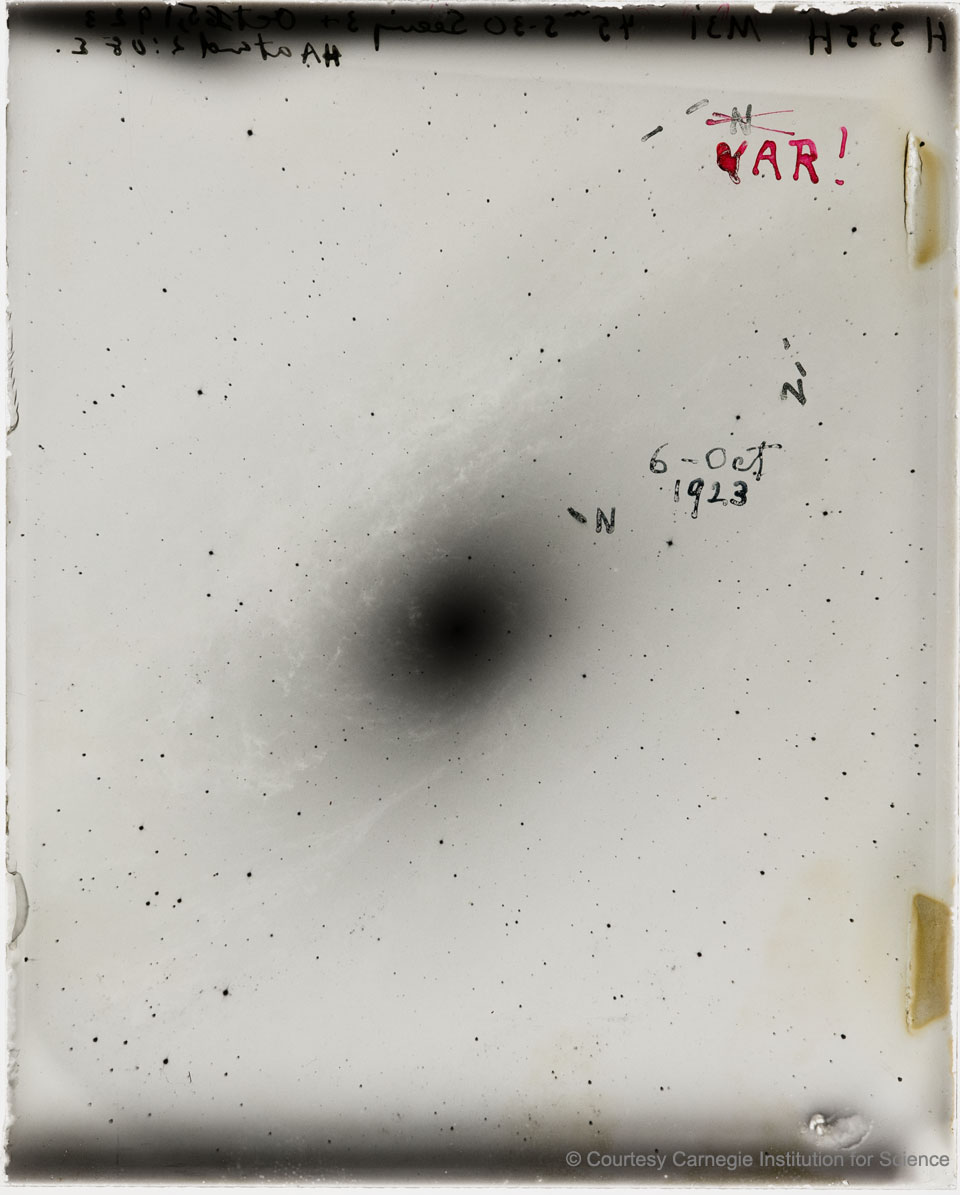2023年10月6日
Edwin Hubble Discovers the Universe
Image Credit & Copyright: Courtesy Carnegie Institution for Science
Explanation: How big is our universe? This question, among others, was debated by two leading astronomers in 1920 in what has since become known as astronomy’s Great Debate. Many astronomers then believed that our Milky Way Galaxy was the entire universe. Many others, though, believed that our galaxy was just one of many. In the Great Debate, each argument was detailed, but no consensus was reached. The answer came over three years later with the detected variation of single spot in the Andromeda Nebula, as shown on the original glass discovery plate digitally reproduced here. When Edwin Hubble compared images, he noticed that this spot varied, and on October 6, 1923 wrote “VAR!” on the plate. The best explanation, Hubble knew, was that this spot was the image of a variable star that was very far away. So M31 was really the Andromeda Galaxy — a galaxy possibly similar to our own. Annotated 100 years ago, the featured image may not be pretty, but the variable spot on it opened a window through which humanity gazed knowingly, for the first time, into a surprisingly vast cosmos.
Tomorrow’s picture: once and future stars
哈勃发现宇宙
影像提供与版权: Courtesy Carnegie Institution for Science
说明: 我们的宇宙有多大?在攸关宇宙的诸多问题之中,这个疑问是1920年代二位大天文学家争辩的焦点,而如今我们称此次论战为天文大辩论。当时的许多天文学家认为,我们的银河系就是整个宇宙。而其他人则相信,我们的银河系只是众多的星系之一。在那次的大辩论里,双方各自细数其观点,但终究未能获得共识。不过3年后,一颗在“仙女座星云”内侦测到的变星提供了答案,上图是记录这项数据的玻璃负片之数字复制。当时哈勃比较不同时间点拍摄的影像,发现这个亮点的亮度有变化,因此他于1923年10月6日在底板上注记了个变(VAR)字。哈勃当下就知道最合理的解释是:这个亮点是遥远变星的影像。也因此,“仙女座星云”其实是仙女座星系,一个位阶和我们银河系相当的天体。这张在100年前加了注记的主题影像,其实并不出采,不过上头记录的变星,为人类打开一扇窗,而我们从此知道,我们所见到的宇宙出乎预料的庞大。
明日的图片: once and future stars







